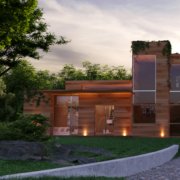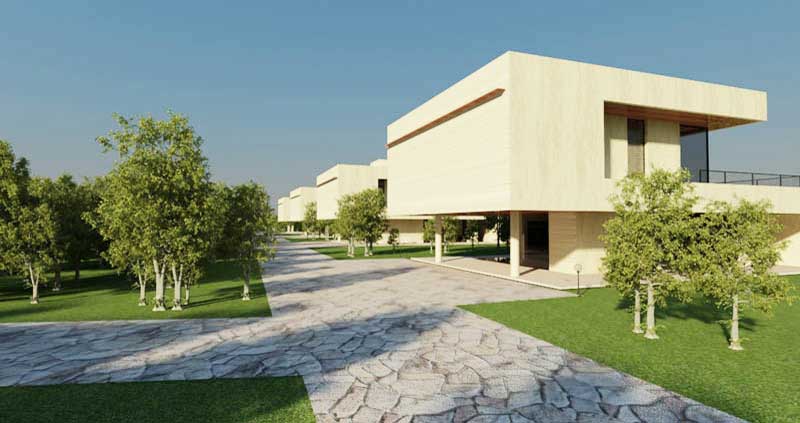Architectural 3D Rendering Development
Architectural 3D rendering is a process by which architects, designers, and 3D artists create three-dimensional visuals of architectural designs. These visualizations serve as a means to project ideas and design concepts, allowing stakeholders to visualize a project before it is built. Development in architectural 3D rendering involves a combination of art, technology, and engineering skills.
The development process typically involves the following stages:
1. Conceptualization:
– Gathering project requirements such as the building design, dimensions, site plan, and environmental context.
– Understanding the purpose of the render (marketing, client approval, design development, etc.)
– Deciding on the viewpoint, composition, and key features to highlight.
2. Modeling:
– Creating a 3D model of the architectural design using software like Autodesk Revit, SketchUp, Rhino, ARCHICAD, or 3ds Max.
– Defining geometry, including walls, floors, roofs, furniture, and other architectural elements.
3. Texturing:
– Applying materials and textures to give surfaces a realistic look.
– Adjusting the reflections, glossiness, and bump maps to enhance the detail.
4. Lighting:
– Simulating natural and artificial lighting to produce realistic shadows and highlights.
– Setting up the time of day, weather conditions, and interior lighting scenarios to match the desired ambiance.
5. Rendering:
– Using rendering engines such as V-Ray, Corona Renderer, or Unreal Engine to compute the final image.
– The computer processes the model, textures, and lighting to produce a two-dimensional image from the 3D scene.
6. Post-processing:
– Editing the render in image editing software like Adobe Photoshop.
– Applying filters, adjusting color balance, adding effects, or compositing to enhance the final image or animation.
7. Review and Revision:
– Sharing the rendered images with clients or stakeholders for feedback.
– Making necessary revisions based on input.
Advances in rendering technology include the following:
– Real-time rendering: Tools like Unreal Engine and Unity are changing the game by providing real-time rendering capabilities, which allow for interactive visualizations and virtual reality experiences.
– AI and Machine Learning: Enhancements in AI are being used for automating certain tasks such as generating textures, optimizing rendering times, and even assisting in the design process.
– Cloud rendering: Cloud-based rendering services offer the ability to offload the heavy computational work to remote servers, thereby reducing the need for expensive local hardware and speeding up the rendering process.
– Photogrammetry: The use of photogrammetry to capture real-world conditions and integrate them into 3D scenes provides another level of realism.
– Sustainability analysis: Integration of sustainability considerations into 3D rendering software to provide insights on energy efficiency, sunlight analysis, and material impacts, helping architects make more environmentally friendly decisions.
For professionals looking to develop skills in architectural 3D rendering, it is important to learn both the technical aspects of 3D modeling and rendering software and to have a good sense of design and composition to create compelling and effective visualizations. Additionally, staying updated with the latest technological trends and tools in the rendering field is crucial for delivering cutting-edge visuals.
Under architectural view, the visual image of a real or a planning architecture is understood. It is designed to receive an aesthetic presentation at the stage of construction planning. Three-dimensional graphical representation is called “rendering” or “visualization”. It is performed in various forms with the help of different tools. Its classical form is an architectural drawing and a model. If everything has been made in a manual way then time-consuming rendering and computer simulation techniques are used. The fundamental importance of rendering arises from numerical data presentation, leading to virtual excursions with camera and animation.
The simplest form of architectural representation is a layout or a line drawing. A pencil, a marker, chalk, a fountain pen, or a ballpoint pen are used in the quality of crayon tools.
Graphical rendering isn’t much new. Project owners are always interested in the architectural appearance of a building before it is built. Many famous architects have produced object visualization for their creations.
Active computer usage data have displaced traditional illustrative techniques over the last few years. Computer rendering gives great virtue to rapid processing and special feature of photorealistic image invention.
It is possible to create 3D models in a virtual apartment since the ninetieth. With the help of CAD technologies production drawings and perspective views were formed.
All virtual models can be elaborated or visualized in the software of three-dimensional graphics. Herewith the virtual model is equipped with texture. As a result, the perspective is selected and visualized with high resolution or converted into two-dimensional surfaces. The most popular image today is the so-called «photorealistic image» whereby realistic clip art is created.
By means of an image processing program such elements as people and cars are integrated into a photo and coordinated with it so, that space sense appears.
Animation goes to even greater extents because movies are produced on the ground of 3D data today. You can be in the act of walking through the building even before laying its foundation. At the same time, it is possible to modify lighting and materials, the whole construction, acoustics, etc. The holding lines don’t need to be handmade in the present day and it is only a question of efficient use of correct tools.
- How to add perspective to architectural projects with digital 3D rendering help - December 24, 2023
- 3D Architectural Walkthrough Animation Services New York - April 24, 2019
- 3D Rendering Services in San Francisco, California - March 12, 2019








